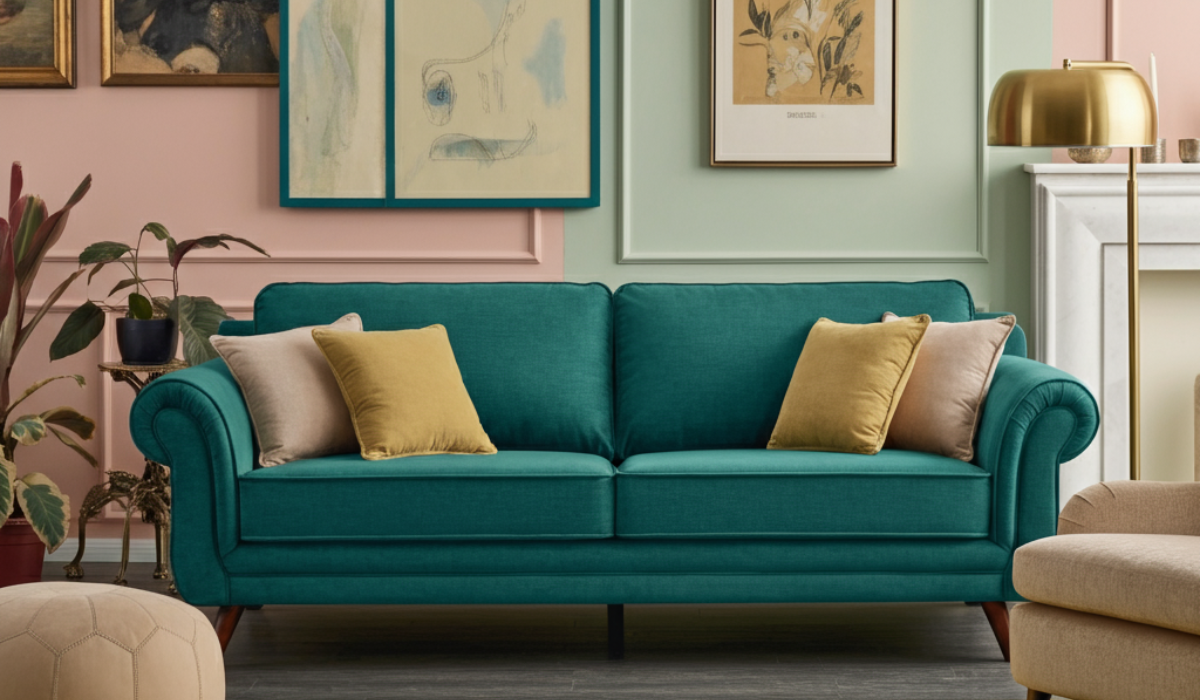Retro color palettes have surged back into the spotlight, blending vintage charm with modern flair to captivate anyone passionate about design, fashion, or aesthetics. These nostalgic color schemes, rooted in the iconic styles of past decades, offer endless inspiration for creating stylish outfits, elegant home decor, and innovative creative projects. In this SEO-optimized article, we’ll explore the essence of retro colors, their vintage combinations, and how they bring a high-end, classic vibe to today’s world.
What Are Retro Color Palettes?
A retro color palette refers to a collection of hues inspired by the design trends of the mid-20th century, spanning roughly from the 1950s to the 1990s. These schemes are more than just colors they’re a nostalgic aesthetic, evoking memories of bygone eras through vibrant brights, soft pastels, or earthy tones. Whether you’re drawn to the vintage combinations of the past or looking to infuse a modern twist, retro palettes provide a versatile foundation for creativity.
A Journey Through Retro Color Schemes by Decade
Each decade boasts its own unique color palette, shaped by cultural shifts and iconic styles. Let’s dive into these classic schemes and see how they inspire today’s trends:
- 1950s: Soft Pastels and Vintage Elegance
Think pale pink, mint green, turquoise, and buttery yellow. The 1950s embraced optimism with these gentle hues, often seen in mid-century kitchens and chic outfits. For a modern, high-end look, pair these pastels with crisp whites or sleek blacks. - 1960s: Bright and Bold Combinations
The 1960s exploded with energy, featuring vivid colors like orange, lime green, and hot pink. Influenced by psychedelic art and space-age vibes, these bright schemes scream confidence. Use them sparingly as accents in a modern outfit or room for a stylish pop. - 1970s: Earthy Tones and Natural Nostalgia
Warm hues like mustard yellow, avocado green, and rusty orange defined the 1970s. These earthy palettes, often paired with wood textures, create a cozy, vintage aesthetic. Add a contemporary edge by mixing them with neutral tones or metallic accents. - 1980s: Bold Glamour and Alloy Accents
Fuchsia, teal, electric yellow, and metallics like gold and silver ruled the 1980s. This era’s flamboyant spirit shines through in fashion and decor. For an elegant retro twist, combine a bold color with a sleek alloy finish like bronze or chrome. - 1990s: Subdued Neutrals and Minimalist Chic
The 1990s leaned into softer shades lavender, sage green, peach, and beige reflecting grunge and minimalist influences. These understated hues work beautifully in modern designs, offering a calm yet stylish vibe when paired with clean lines.
High-End Retro Color Schemes: Luxury Meets Vintage
Retro colors don’t just evoke nostalgia they can also exude luxury when elevated with thoughtful pairings. Here’s how to create high-end combinations:
- 1950s Sophistication: A pale pink dress with white heels or a turquoise sofa against a black wall oozes timeless elegance.
- 1960s Drama: Pair bold red or navy with gold accents for a glamorous, high-end outfit or interior statement.
- 1970s Richness: Deep brown or mustard yellow with metallic trims like a velvet chair with brass legs brings luxurious warmth.
- 1980s Opulence: Fuchsia or teal with black or silver creates a striking, upscale look perfect for fashion or focal decor pieces.
- 1990s Refinement: Beige and pale blue in sleek designs offer a minimalist yet elegant aesthetic for modern spaces.
Modern Retro Color Trends: Blending Nostalgia with Innovation
Today’s designers are reimagining retro palettes, merging vintage roots with innovative twists. Here are some trending ideas:
- Pink, Green, and Beige: A nod to the 1970s and 1990s, this trio creates warm, inviting spaces or outfits. Picture a pink blouse with beige trousers and green accessories.
- Bold Accents: Add a single retro hue like bright yellow or teal to a neutral base for a stylish, modern contrast.
- Beach-Inspired Palettes: Coral, turquoise, and sandy beige evoke a retro beach vibe, perfect for summer fashion or coastal decor.
- Alloy Finishes: Metallics like gold or bronze, popular in the 1980s, pair beautifully with bold or soft colors for an innovative edge.
How to Incorporate Retro Color Palettes into Your Life
Ready to embrace this nostalgic aesthetic? Here’s how to use retro colors in fashion, decor, and beyond:
- Start Small: Test the waters with accessories an orange scarf, a teal cushion, or a vintage-inspired lamp.
- Mix Eras: Combine a 1950s pastel with an 1980s bright for an eclectic, stylish look.
- Balance with Neutrals: Ground bold retro hues with white, gray, or black to keep things elegant and modern.
- Set the Mood: Choose soft tones for calm vibes or vibrant shades for energy and excitement.
- Play with Texture: Enhance the retro feel with materials like velvet, wood, or alloy accents.
Conclusion: Why Retro Color Palettes Endure
Retro color palettes are a bridge between the past and present, offering a nostalgic yet fresh way to express style. Whether you’re curating a vintage outfit, designing a modern home, or exploring classic color combinations, these schemes bring personality and flair to every project. From high-end elegance to beach-inspired ease, retro colors prove that what’s old can always feel new again.
Embrace the retro revival today your wardrobe, home, and creative spirit will thank you!

